Related Research Articles

Geoffrey Charles Ryman is a Canadian writer of science fiction, fantasy, slipstream and historical fiction.
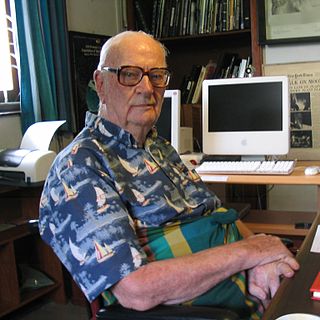
Hard science fiction is a category of science fiction characterized by concern for scientific accuracy and logic. The term was first used in print in 1957 by P. Schuyler Miller in a review of John W. Campbell's Islands of Space in the November issue of Astounding Science Fiction. The complementary term soft science fiction, formed by analogy to the popular distinction between the "hard" (natural) and "soft" (social) sciences, first appeared in the late 1970s. Though there are examples generally considered as "hard" science fiction such as Isaac Asimov's Foundation series, built on mathematical sociology, science fiction critic Gary Westfahl argues that while neither term is part of a rigorous taxonomy, they are approximate ways of characterizing stories that reviewers and commentators have found useful.

Alastair Preston Reynolds is a Welsh science fiction author. He specialises in hard science fiction and space opera.

David Rowland Langford is a British author, editor, and critic, largely active within the science fiction field. He publishes the science-fiction fanzine and newsletter Ansible and holds the all-time record for most Hugo Awards, with a total of 29 wins.

Science Fantasy, which also appeared under the titles Impulse and SF Impulse, was a British fantasy and science fiction magazine, launched in 1950 by Nova Publications as a companion to Nova's New Worlds. Walter Gillings was editor for the first two issues, and was then replaced by John Carnell, the editor of New Worlds, as a cost-saving measure. Carnell edited both magazines until Nova went out of business in early 1964. The titles were acquired by Roberts & Vinter, who hired Kyril Bonfiglioli to edit Science Fantasy; Bonfiglioli changed the title to Impulse in early 1966, but the new title led to confusion with the distributors and sales fell, though the magazine remained profitable. The title was changed again to SF Impulse for the last few issues. Science Fantasy ceased publication the following year, when Roberts & Vinter came under financial pressure after their printer went bankrupt.
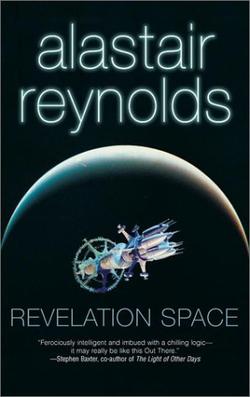
Revelation Space is a 2000 science fiction novel by Welsh author Alastair Reynolds. It was the first novel set in Reynolds's eponymous universe. The novel reflects Reynolds's professional background: he has a PhD in astronomy and worked for many years for the European Space Agency. It was short listed for the 2000 BSFA and Arthur C. Clarke Awards.
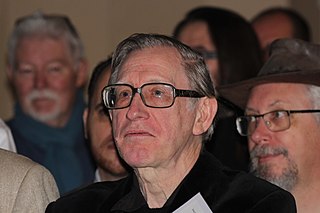
Brian Michael Stableford was a British academic, critic and science fiction writer who published more than 70 novels and over a hundred volumes of translations. His earlier books were published under the name Brian M. Stableford, but later ones dropped the middle initial and appeared under the name Brian Stableford. He also used the pseudonym Brian Craig for some of his very early and late works. The pseudonym derives from the first names of himself and of a school friend from the 1960s, Craig A. Mackintosh, with whom he jointly published some very early work.
Terraforming is well represented in contemporary literature, usually in the form of science fiction, as well as in popular culture. While many stories involving interstellar travel feature planets already suited to habitation by humans and supporting their own indigenous life, some authors prefer to address the unlikeliness of such a concept by instead detailing the means by which humans have converted inhospitable worlds to ones capable of supporting life through artificial means.

Infinity Science Fiction was an American science fiction magazine, edited by Larry T. Shaw, and published by Royal Publications. The first issue, which appeared in November 1955, included Arthur C. Clarke's "The Star", a story about a planet destroyed by a nova that turns out to have been the Star of Bethlehem; it won the Hugo Award for that year. Shaw obtained stories from some of the leading writers of the day, including Brian Aldiss, Isaac Asimov, and Robert Sheckley, but the material was of variable quality. In 1958 Irwin Stein, the owner of Royal Publications, decided to shut down Infinity; the last issue was dated November 1958.
Keith Brooke is a British science fiction author, editor, web publisher and anthologist from Essex, England. He is the founder and editor of the infinity plus webzine. He also writes children's fiction under the name Nick Gifford.
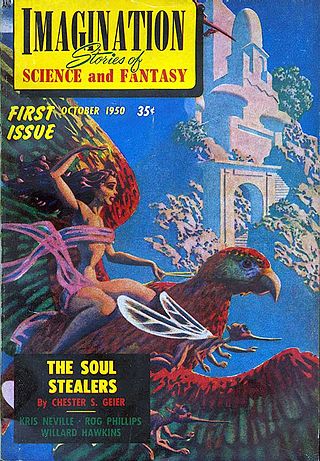
Imagination was an American fantasy and science fiction magazine first published in October 1950 by Raymond Palmer's Clark Publishing Company. The magazine was sold almost immediately to Greenleaf Publishing Company, owned by William Hamling, who published and edited it from the third issue, February 1951, for the rest of the magazine's life. Hamling launched a sister magazine, Imaginative Tales, in 1954; both ceased publication at the end of 1958 in the aftermath of major changes in US magazine distribution due to the liquidation of American News Company.
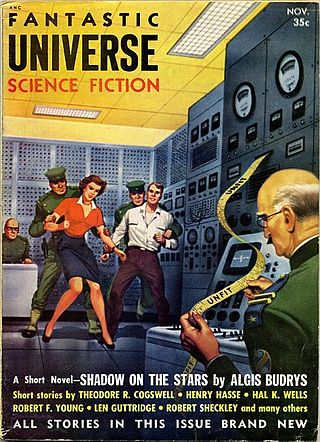
Fantastic Universe was a U.S. science fiction magazine which began publishing in the 1950s. It ran for 69 issues, from June 1953 to March 1960, under two different publishers. It was part of the explosion of science fiction magazine publishing in the 1950s in the United States, and was moderately successful, outlasting almost all of its competitors. The main editors were Leo Margulies (1954–1956) and Hans Stefan Santesson (1956–1960).

Science-Fiction Plus was an American science fiction magazine published by Hugo Gernsback for seven issues in 1953. In 1926, Gernsback had launched Amazing Stories, the first science fiction magazine, but he had not been involved in the genre since 1936, when he sold Wonder Stories. Science-Fiction Plus was initially in slick format, meaning that it was large-size and printed on glossy paper. Gernsback had always believed in the educational power of science fiction, and he continued to advocate his views in the new magazine's editorials. The managing editor, Sam Moskowitz, had been a reader of the early pulp magazines, and published many writers who had been popular before World War II, such as Raymond Z. Gallun, Eando Binder, and Harry Bates. Combined with Gernsback's earnest editorials, the use of these early writers gave the magazine an anachronistic feel.
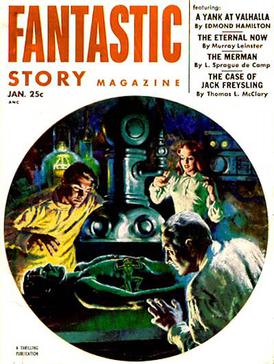
Fantastic Story Quarterlywas a pulp science fiction magazine, published from 1950 to 1955 by Best Books, a subsidiary imprint of Standard Magazines, based in Kokomo, Indiana. The name was changed with the Summer 1951 issue to Fantastic Story Magazine. It was launched to reprint stories from the early years of the science fiction pulp magazines, and was initially intended to carry no new fiction, though in the end every issue contained at least one new story. It was sufficiently successful for Standard to launch Wonder Story Annual as a vehicle for more science fiction reprints, but the success did not last. In 1955 it was merged with Standard's Startling Stories. Original fiction in Fantastic Story included Gordon R. Dickson's first sale, "Trespass", and stories by Walter M. Miller and Richard Matheson.
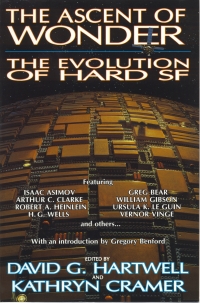
The Ascent of Wonder: The Evolution of Hard SF is a definitive 1994 anthology of hard science fiction (sf) short stories compiled by the award-winning editing team of David G. Hartwell and Kathryn Cramer. This 990-page book includes 68 stories, each prefaced by a brief note to describe facts about the author, related works, or the logic of the story's inclusion in the genre. In addition, the book opens with three essays about the meaning and the boundaries of hard science fiction. The editors further explored these issues in The Hard SF Renaissance (2002).

Year's Best SF 15 is a science fiction anthology edited by David G. Hartwell and Kathryn Cramer that was published in June 2010. It is the fifteenth in the Year's Best SF series.

Science Fiction Adventures was an American digest-size science fiction magazine, published from 1956 to 1958 by Irwin Stein's Royal Publications as a companion to Infinity Science Fiction, which had been launched in 1955. Larry Shaw was the editor for all 12 issues. Science Fiction Adventures focused on longer fiction than appeared in Infinity; these were often labeled as novels, though they were rarely longer than 20,000 words. Shaw declared in his first editorial that he wanted to bring back a "sense of wonder", and he printed straightforward action-adventure stories. Two other magazines of the period, Imagination and Imaginative Tales, had similar editorial approaches, but science fiction historian Mike Ashley considers that Science Fiction Adventures contained the best fiction of the three. Robert Silverberg was a prolific contributor, under his own name and under the pseudonym "Calvin M. Knox", and he also collaborated with Randall Garrett on two stories in the first issue, under two different pseudonyms. Other well-known writers occasionally appeared, including Harlan Ellison, Cyril M. Kornbluth, Algis Budrys, and Harry Harrison. Ed Emshwiller contributed cover art for nine of the twelve issues, and one of the other three was among John Schoenherr's earliest sales.
The year 1937 was marked, in science fiction, by the following events.
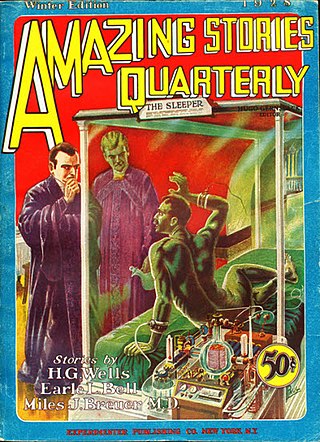
Amazing Stories Quarterly was a U.S. science fiction pulp magazine that was published between 1928 and 1934. It was launched by Hugo Gernsback as a companion to his Amazing Stories, the first science fiction magazine, which had begun publishing in April 1926. Amazing Stories had been successful enough for Gernsback to try a single issue of an Amazing Stories Annual in 1927, which had sold well, and he decided to follow it up with a quarterly magazine. The first issue of Amazing Stories Quarterly was dated Winter 1928 and carried a reprint of the 1899 version of H.G. Wells' When the Sleeper Wakes. Gernsback's policy of running a novel in each issue was popular with his readership, though the choice of Wells' novel was less so. Over the next five issues, only one more reprint appeared: Gernsback's own novel Ralph 124C 41+, in the Winter 1929 issue. Gernsback went bankrupt in early 1929, and lost control of both Amazing Stories and Amazing Stories Quarterly; associate editor T. O'Conor Sloane then took over as editor. The magazine began to run into financial difficulties in 1932, and the schedule became irregular; the last issue was dated Fall 1934.

Science Fact and Science Fiction: An Encyclopedia is a 2006 reference work written by Brian Stableford and published by Routledge. It consists of approximately 300 entries on various topics relating to how scientific advancements have influenced fiction. The book received positive reviews, with critics commending it for filling a previously-unoccupied niche in the literature and praising the contents in terms of depth and breadth, although finding the book to be expensive at a price of $165.
References
- ↑ science fiction, fantasy and horror from infinity plus, retrieved May 13, 2018
- ↑ The story of infinity plus, originally published in Interzone 133 (July 1998); retrieved May 13, 2018
- ↑ Historical Dictionary of Science Fiction Literature, by Brian Stableford; published 2004 by Scarecrow Press
- ↑ Infinity Plus eBooks, by John DeNardo, at SF Signal ; published October 22, 2011; retrieved May 13, 2018; via archive.org